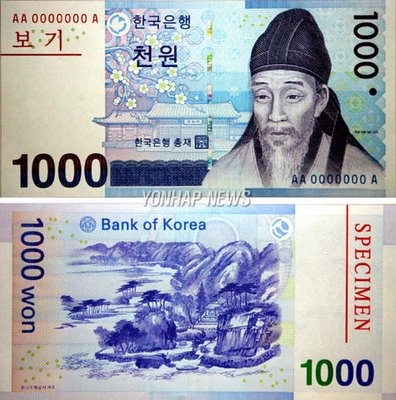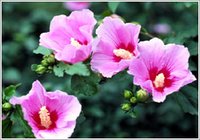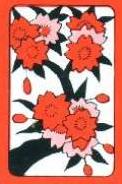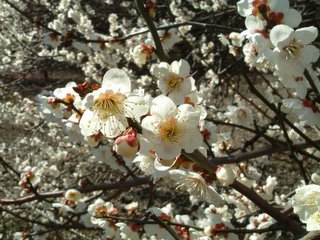The Bank of Korea has finally approved new bills of a larger denomination, 50,000 won and 100,000 won, to be precise (link to Korean-language Yonhap article), to be released in early 2009. Read the comments section below for ideas about who should be on the bills (my vote is for Shin Saimdang). This is the first new note since 1973.
Back in 1973, the new 10,000-won bill was worth an awful lot. Since then, according to the English-language article, consumer prices have increased twelve-fold, while personal income has increased 110-fold. In other words, a 10,000-won bill was quite sufficient.
Worries about making bribery and corruption easier were the main reasons not to increase the size of the denominations, but the cost of supyo checks has been the deciding factor here: no longer will banks or consumers have to go through the labor-intensive cost of dealing with all those checks. The Bank of Korea said the new bank notes will save about 280 billion won annually (just under $300 million).
Meanwhile, the Bank of Korea is pooh-poohing plans to lop off a few zeroes from the currency (e.g., making 1000 won just 1 won). I think they should keep the zeroes, if for no other reason that (a) it provides good numbers practice for both learners of Korean and learners of English and (b) it's as close as some of us will ever get to being millionaires.
Back to who should be on the bill, my suggestion is that Saimdang be on the fifty, not the hundred. Why? Parents of school-age children will be tempted to bribe their child's teachers with money depicting Shin, who is seen as a symbol of proper education. Just like people taking the college entrance exam were stealing the S off of Hyundai Sonatas, for good luck, some parents may guess there's some beneficial power in giving someone a Shin bill instead of, say, one with Emperor Kojong, Queen Myŏngsŏng, or Tan'gun. So let's save those other people for the hundred.
And in this way, perhaps we can cut education-related bribery in half. You'll all thank me later.
ORIGINAL POST (January 2006):
The Bank of Korea has issued the prototype for the new counterfeit-resistant 1000-won bills, following close on the heels of the new 5000-won bill introduced last year. The BoK wants to have these ready to go by the first half of this year.

The main features are still on the new bill, including prominent Confucian scholar Yi Hwang. It also still says "1000" (wouldn't it be ever-so-cool if they could get each installed with a tiny chip that would instead display that day's dollar-to-won exchange rate: 978.3 today, 972.1 the following day, etc.?).
The new background has a traditional Korean wall-hanging and flowers... flowers that look to me like, er, um, cherry blossoms [first photo below]. I'm not kidding, I did a double-take on that. Maybe it's supposed to be a mugunghwa (Rose of Sharon, a common garden hibiscus), Korea's national flower [second photo below]. Both of them are represented as five-pointed flowers, I think, but the flowers on leaf-less branches depicted on the 1000-won bill seems more sakura/pŏkkot-like than mugunghwa-like. Also, the flowers in the drawing remind me of hwatu (go-stop) cards.


It's entirely possible that the drawing is supposed to be of a non-specific flower in general or of some third variety I haven't thought of, but if it really is a cherry blossom, then kudos to whomever made this decision for not fearing the uber-jingoists who decry the millions (?) of Koreans who flock to parks each April to view the cherry blossoms (벚꽃) during their ephemeral bloom and who occasionally chop down the cherry blossom trees (벚나무) to make their crazed point.
The reverse of the note follows after a Choson-era painting depicting the Tosan Lecture Hall in Andong, made famous by Yi Hwang's teachings. The more compact note will also be fifteen millimeters narrower and eight millimeters shorter in length, while using color-changing ink, latent images and silver lines to counter forgery attempts. Gone are the two Korean syllables in the serial number, replaced by Roman characters. Gone also is the dominant pinkness that characterized the previous bill (the 1000-won, 5000-won, and 10,000-won were mainly pink, orange, and green, respectively). The new blue/aqua color reminds me of a cool day at the beach.
Finally, with Dr. Hwang Woo-suk now disgraced, the Bank of Korea says it is planning to remove the word "specimen" on each bill, which had been inserted as a subtle nod to the celebrity veterinarian's biological research.
ADDENDUM TO POST:
Jing said the flowers in question might be pear/plum blossoms, known in Korean as maehwa. Upon further inspection, I think that's what they were. The card below on the left is a maehwa (pear blossom), representing February in the hwat'u cards (hanafuda in Japanese). This is the one I thought resembled the flowers on the 1000-won bill. The card on the right is the pŏkkot (cherry blossom), representing March. I always get these two flowers confused in the hwat'u system, so I may be wrong that the new money is possibly featuring a cherry blossom.


Below is a picture of actual maehwa. You be the judge.

Finally, with Dr. Hwang Woo-suk now disgraced, the Bank of Korea says it is planning to remove the word "specimen" on each bill, which had been inserted as a subtle nod to the celebrity veterinarian's biological research.
ReplyDeleteQuite humorous. I wonder how many people would take your comment at face value because you didn't include a disclaimer.
wouldn't it be ever-so-cool if they could get each installed with a tiny chip that would instead display that day's dollar-to-won exchange rate: 978.3 today, 972.1 the following day, etc.?
ReplyDeleteSmart, but wonder why we'd need paper bils then? hehe...
I think, but the flowers on leaf-less branches depicted on the 1000-won bill seems more sakura/pǒkkot-like than mugunghwa-like. Also, the flowers in the drawing remind me of hwatu (go-stop) cards.
Sensational!
You just made big news with that!
The flower could possibly be a plum blossom, which also happens to be the national flower of the Republic of China. The commies on the other hand seem to favour peonies.
ReplyDeleteThe flower could possibly be a plum blossom, which also happens to be the national flower of the Republic of China. The commies on the other hand seem to favour peonies.
ReplyDeleteHmm... having just now found a picture of a plum blossom, I think that is a possibility. It is five-petaled and has a circle in the middle.
Plum blossoms or pear blossoms, I believe, were the symbol of the Ijo (Chosŏn) Dynasty, so it could be that.
Anyway, I'm now even more convinced that these are not supposed to be mugunghwa. The historic connection could make them plum/pear blossoms, and just the fact that cherry blossoms are all over the place here (and they were indigenous to Korea long before they became a symbol of Japan) and considered very pretty, make one of these a likely suspect (if the "generic flower" was not what they were going for).
In either case, kudos to whomever designed this and to whomever accepted the design for thinking outside the box, even though one each of these is the national symbol of another country. I'm just glad one of the countries is Taiwan or Japan; or rather, not the People's Republic of China or North Korea.
Joel quoted me, then said:
ReplyDeleteFinally, with Dr. Hwang Woo-suk now disgraced, the Bank of Korea says it is planning to remove the word "specimen" on each bill, which had been inserted as a subtle nod to the celebrity veterinarian's biological research.
Quite humorous. I wonder how many people would take your comment at face value because you didn't include a disclaimer.
Oh, dear. You might be right. There are probably some people in the echo chamber who assume for ROK so loved the doctor that they gaveth all they had begotten, including the money, and this would just be a prime example of that.
Worse even, some of Hwang's cult-like followers, while searching the 'net for more Kool-Aid recipes, might run across this and think they've stumbled across the real reason for the SPECIMEN note, and then hold a candlelight vigil in front of the Bank of Korea in Myŏngdong demanding that SPECIMEN be put back on every 1000-won bill that is printed.
wouldn't it be ever-so-cool if they could get each installed with a tiny chip that would instead display that day's dollar-to-won exchange rate: 978.3 today, 972.1 the following day, etc.?
ReplyDeleteSmart, but wonder why we'd need paper bils then? hehe...
Because the bar code for "666" would look ugly tatooed across our foreheads. ;)
I think, but the flowers on leaf-less branches depicted on the 1000-won bill seems more sakura/pǒkkot-like than mugunghwa-like. Also, the flowers in the drawing remind me of hwatu (go-stop) cards.
Sensational!
You just made big news with that!
I should look into this further. The cards for what month is the cherry blossoms (or are they pear blossoms?). Dang, I can never get these right. I have loved the game since I was a young, but can never remember which flowers/plants go with which months.
The Bank of Korea didn't give scholar Yi Hwang eye surgery(쌍꺼풀 수술 or 상안검 이완증 수술)! Even President Roh and his wife had the surgery! Since the government wasted the tax money for the celebrity scumbag, it couldn't afford the surgery for Yi. Poor Yi. He looked so tired and even sleepy.
ReplyDeleteUm, wtf? Was there really a problem with people counterfeiting a bill worth a dollar? Seems like a waste of time. What's next? A redesigned 10 won coin?
ReplyDelete